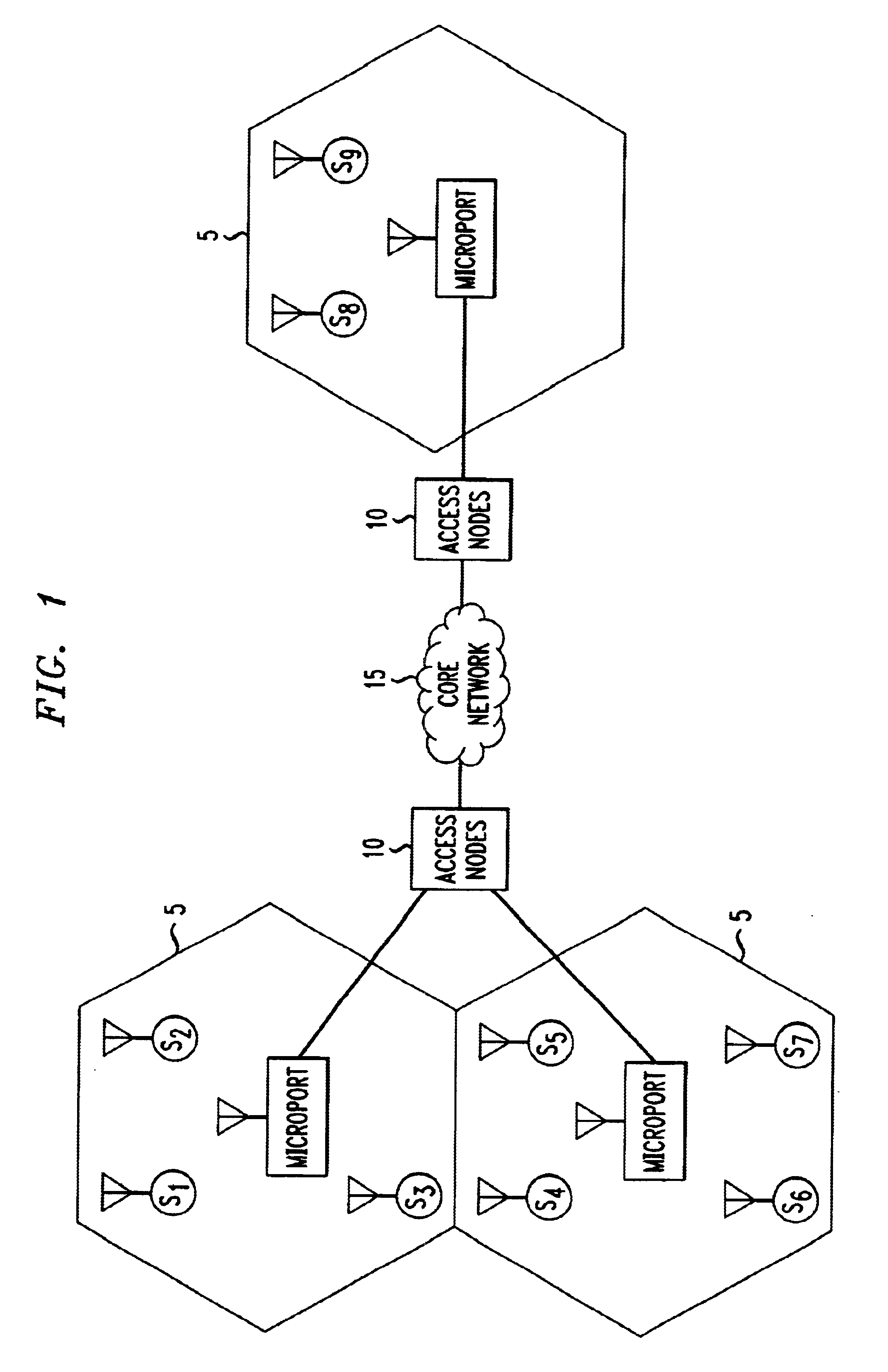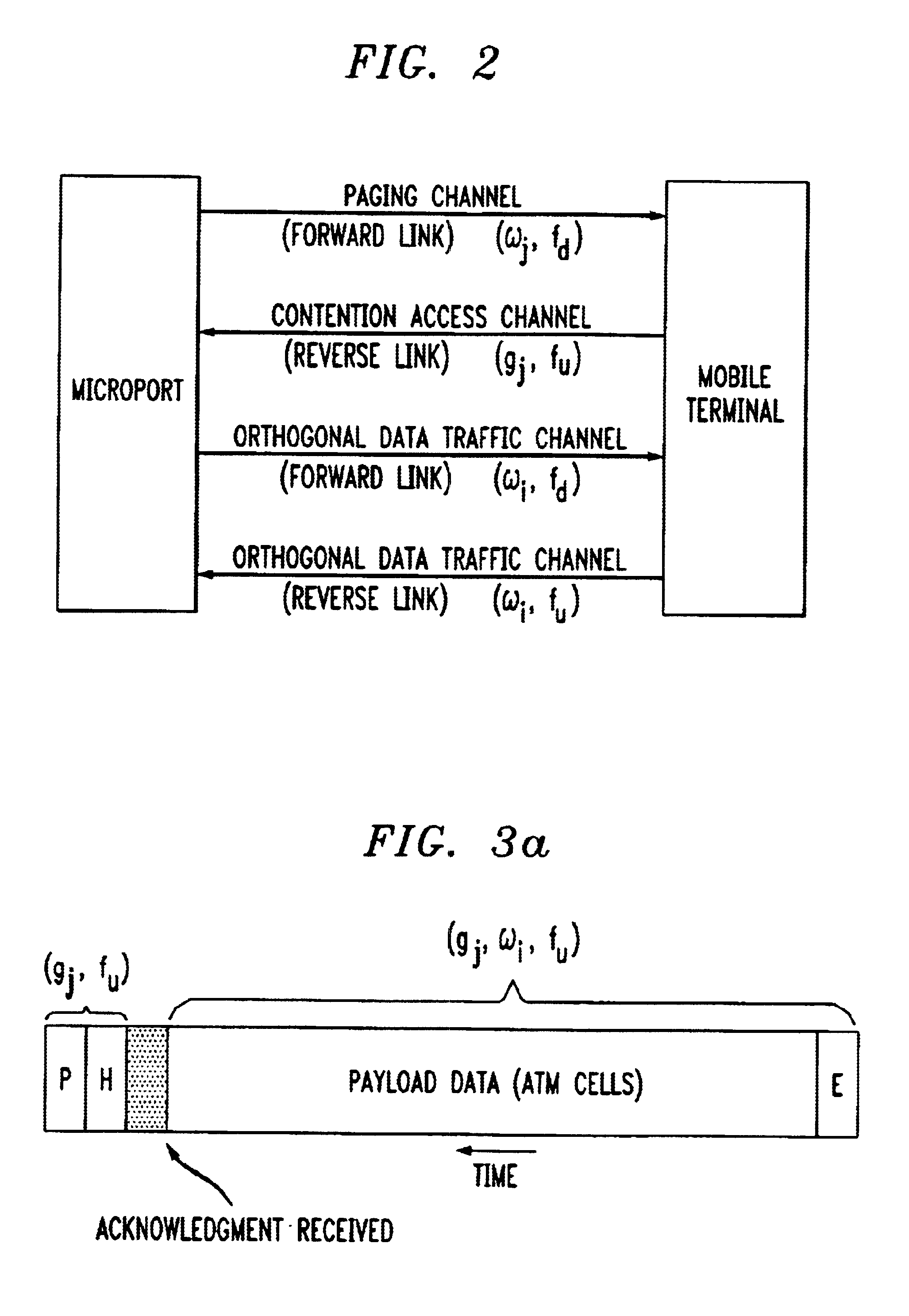CDMA to packet-switching interface for code division switching in a terrestrial wireless system
a terrestrial wireless and code division technology, applied in the field of communication systems, can solve the problems of inability to meet multimedia demands, circuit switching does not appear to offer flexibility and speed, and datagrams do not appear to be a solution to problems, etc., to improve system performance and data rate, simplify and reduce switching complexity (hardware and/or software) and equipment volume, and improve the routing of user data in the spread spectrum
- Summary
- Abstract
- Description
- Claims
- Application Information
AI Technical Summary
Benefits of technology
Problems solved by technology
Method used
Image
Examples
Embodiment Construction
[0033]FIG. 1 depicts a terrestrial wireless system configuration. Within a terrestrial CDMA wireless communications system interfacing with a plurality of originating and destination wireless terminal users, a core network backbone 15 interconnects a plurality of access nodes 10 within the system. Originating wireless subscriber / user terminals and destination wireless subscriber / user terminals are interchangeable. That is, on any given transmission, a given wireless subscriber / user terminal may be an originating or a destination terminal. The wireless subscriber / user terminals are depicted within cells 5 by a circle with an antenna. They are distinguished from one another by the letter “S” with a numerical subscript. It should be noted here that the number and identification of subscriber / user terminals within a cell will vary as subscribers drive through a given cell. Also depicted within each cell is an access radio port (also called a microport). An access radio port is depicted ...
PUM
 Login to View More
Login to View More Abstract
Description
Claims
Application Information
 Login to View More
Login to View More - R&D
- Intellectual Property
- Life Sciences
- Materials
- Tech Scout
- Unparalleled Data Quality
- Higher Quality Content
- 60% Fewer Hallucinations
Browse by: Latest US Patents, China's latest patents, Technical Efficacy Thesaurus, Application Domain, Technology Topic, Popular Technical Reports.
© 2025 PatSnap. All rights reserved.Legal|Privacy policy|Modern Slavery Act Transparency Statement|Sitemap|About US| Contact US: help@patsnap.com



